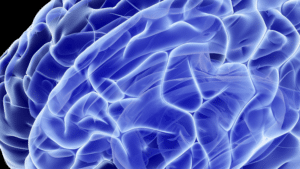What is CBG and what are its effects?
A significant part of the public has already encountered the notorious elements of cannabis such as THC or CBD in their lives, but did you know that there are many similar compounds in this herb?
A lesser-known cannabinoid called cannabigerol (CBG) is certainly worth mentioning, which has a number of beneficial effects.
CBG is considered a minor cannabinoid because it is present at low levels (usually less than 1%) in most cannabis strains. Cannabis plants produce cannabigerolic acid (CBGA), the precursor to the three main lines of cannabinoids: tetrahydrocannabinolic acid (THCA), cannabidiol acid (CBDA), and cannabichromenic acid (CBCA). CBG could therefore be described as a basic building block, which is further broken down into the above-mentioned compounds during the growth of this plant.

Breakdown of cannabinoids
With the help of specific enzymes, CBGA is split, which is further directed to one of the three mentioned lines. (THCA, CBDA, CBCA) When the acids of these compounds are exposed to ultraviolet light or heat, they become the cannabinoids we know well: THC and CBD. Most strains convert instantly to THCA or CBDA. More THC in the plant means less CBD and CBG (and vice versa).
Maintaining high CBG values is possible through plant crossing and genetic manipulation. If we determine the optimal time for the extraction, we can achieve higher CBG levels again. This is usually between six and eight weeks of the flowering cycle.

The endocannabinoid system
The human body's integrated endocannabinoid system (ECS) maintains the body in its balanced state of homeostasis. The ECS generally performs different functions specific to each area of the body. For example, at the site of injury, the ECS can help regulate immune cells to limit inflammation. CBG has been found to support the proper functioning of the ECS and has beneficial effects on a wide range of ailments.
What do the studies say about CBG?
In a recent 2015 study, CBG was shown to help protect the nervous system and prevent the degeneration of nerve cells in the brain.
In another 2017 study, researchers showed that a certain form of CBG can be an effective appetite stimulant.
In a scientific study that examined the effects of five different cannabinoids on bladder contractions, CBG performed best, so it may be a future tool in the prevention of bladder dysfunction disorders.

Research evaluation
The researchers are excited about these initial results with CBG and encourage future research with CBG alone or with CBG in combination with other cannabinoids and therapies for the treatment of many diseases. Because it is not psychotropic, CBG has a promising wide range of potential applications not only for the above problems, but also as a natural antidepressant, for example.
































